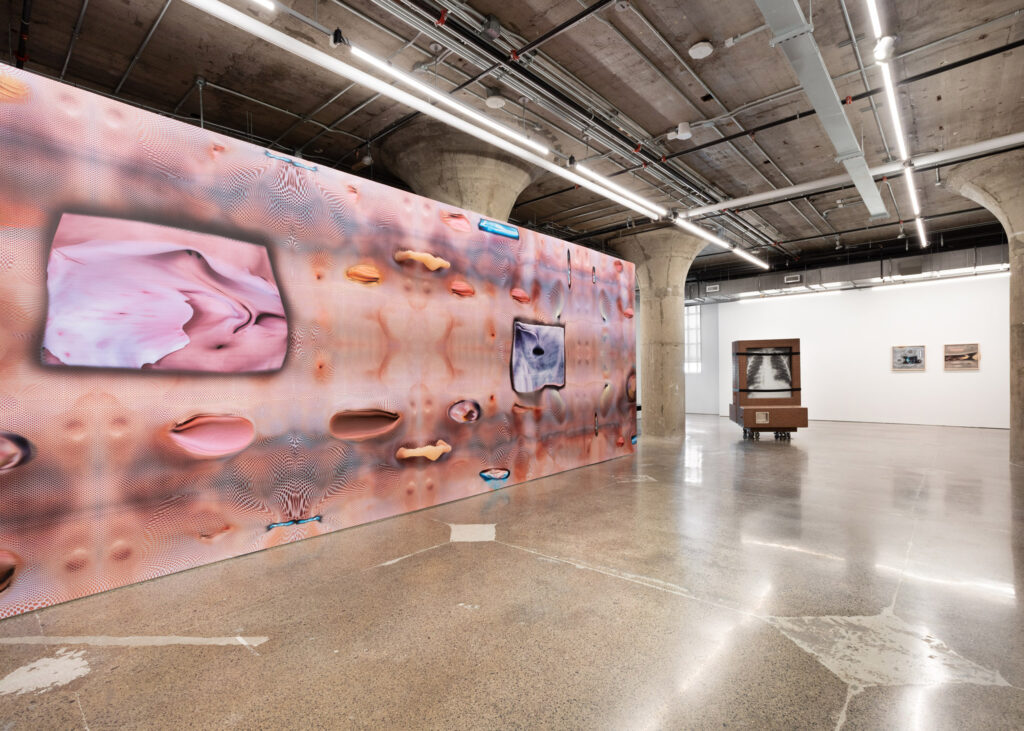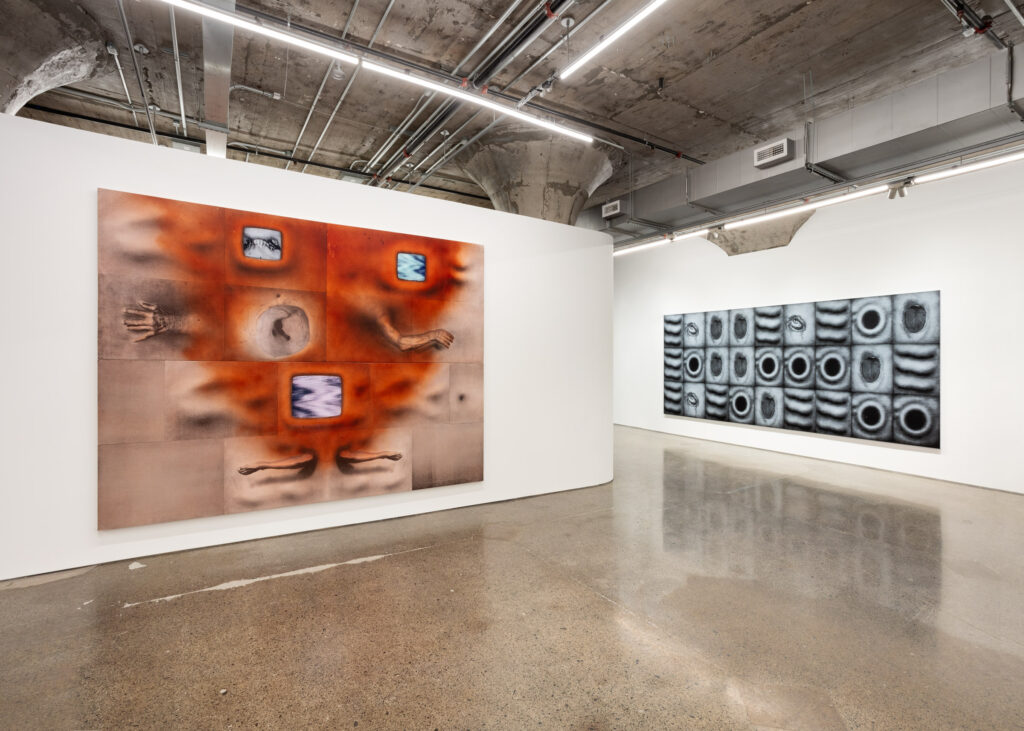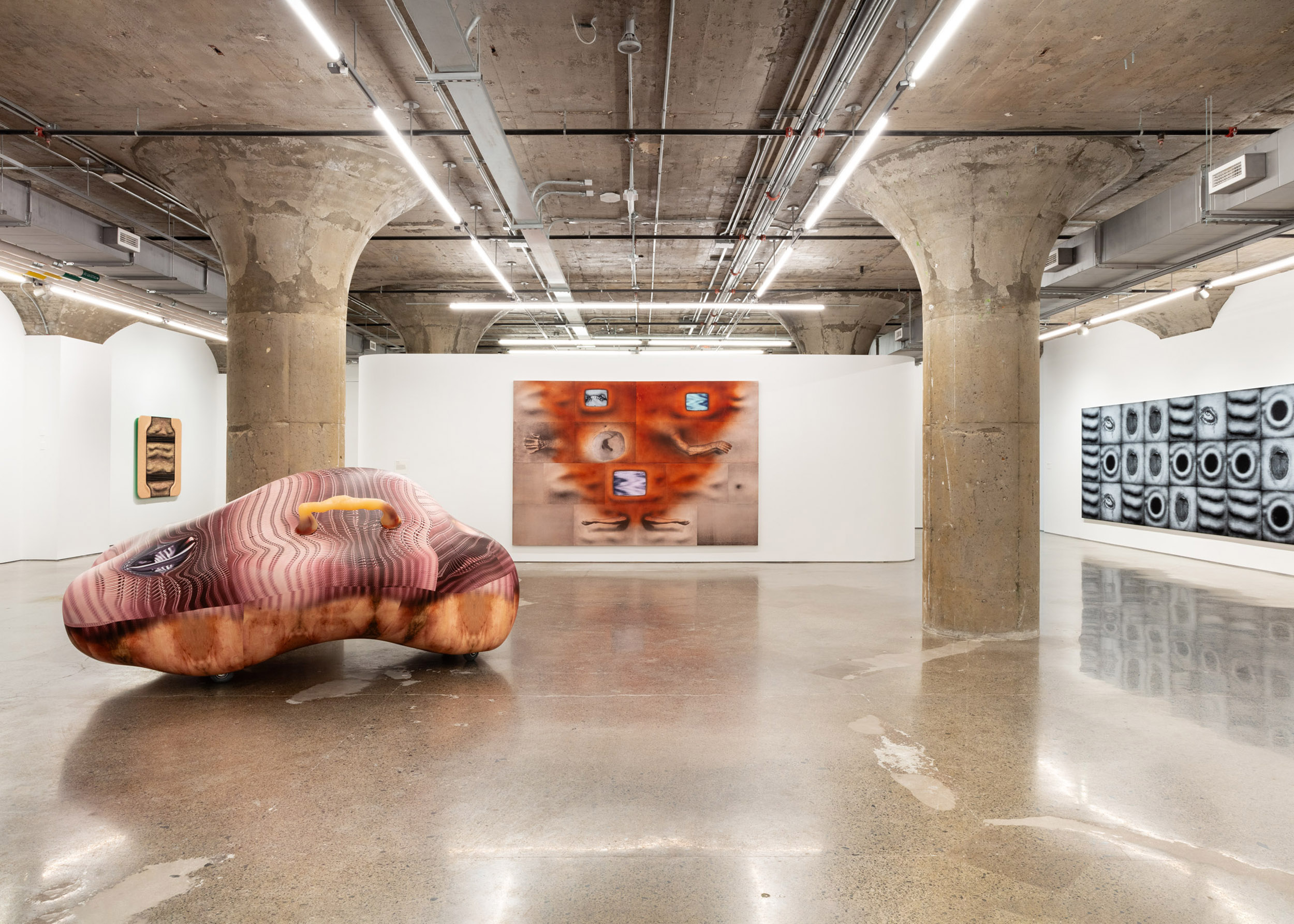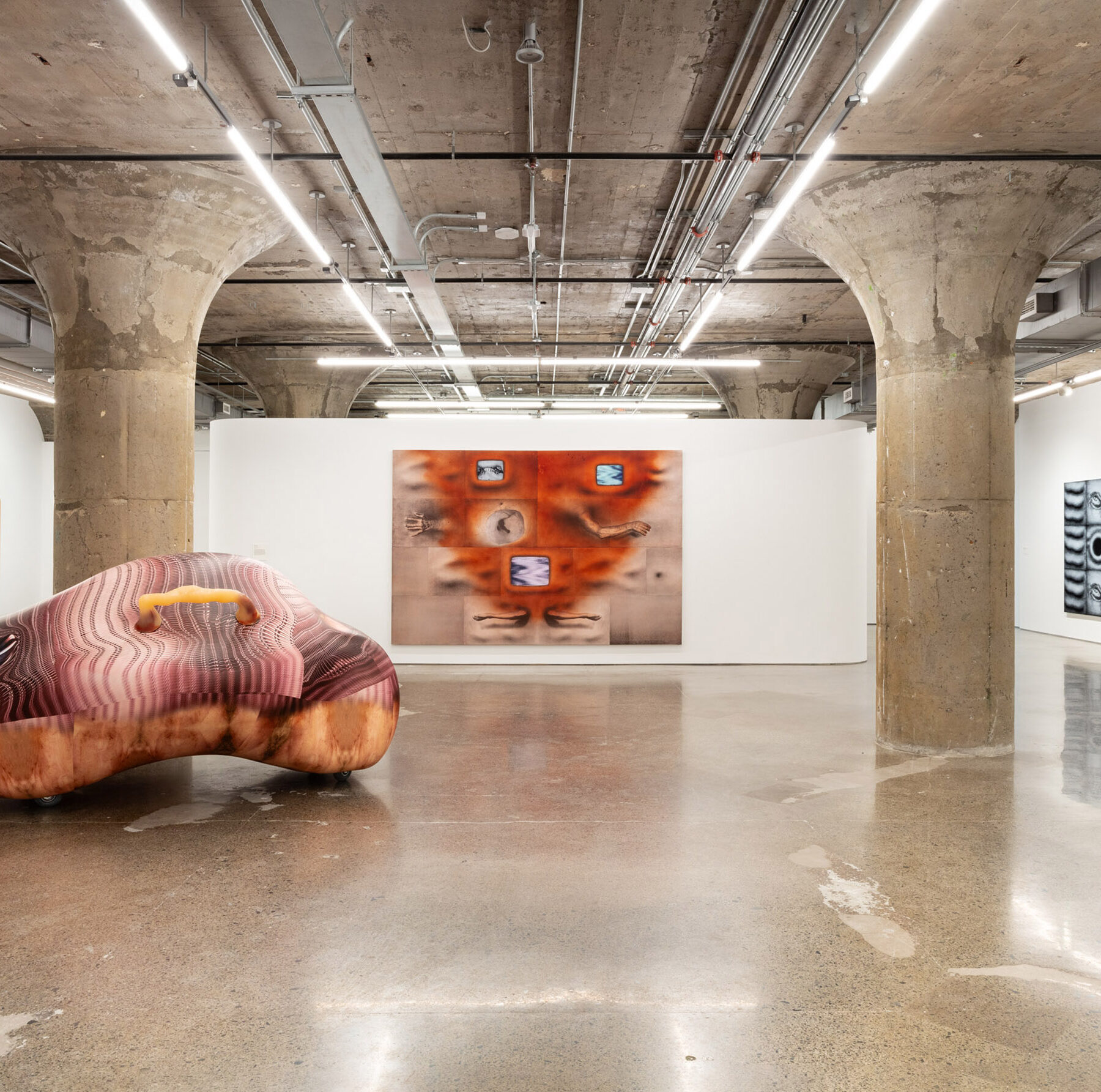On occasion, I get so lost in the glowing abyss of my phone that the only thing that can bring me back to my body is a car honking, a reminder that I’m only halfway finished crossing the street. It’s not an uncommon scenario, especially in a world in which digital innovations move at a faster pace than the human brain can comprehend. This tension is manifested in the works of New York-based artist Tishan Hsu, who interrogates technology’s impact on the body through a variety of mediums including painting, sculpture, and installation. Hsu has been at the vanguard of contemporary artists reacting to new digital realities for over three decades, studying Environmental Design at MIT before weaving his way into the New York art scene in the mid-1980s.
Unlike many of his peers, Hsu’s approach to digital acceleration is less didactic and more sensorial. Beautiful and grotesque, his work shrinks the gulf between two- and three-dimensional space; round sculptures feature smooth, screen-like surfaces, or, flat walls and canvases are covered in gaping, mouth-like lacerations. In honour of Hsu’s first Canadian museum exhibition, lnterface Remix, which features a selection of the artist’s wide-ranging work alongside new, site-responsive pieces, the artist dove into what art can teach us about the, surprisingly sensual, future of biotechnology.
You were born in Boston, then moved to Switzerland, Ohio, Wisconsin and Virginia before eventually landing in New York City. How do you think these various migrations have impacted your practice and interests as an Artist?
As a first-generation Asian American, I was born in the U.S. after my parents made a long journey across the globe towards a completely different culture. When the idea of an Internet emerged, I imagined a new kind of continuous (if not infinite) space where the world would be connected in a radically new way. Perhaps my interest was partially driven by finding a way to psychologically reconnect the world that my parents had to navigate when they settled in the U.S., as a way to somehow integrate the disparities of distance and culture.

Tishan Hsu, Interface Remix, installation view, MOCA Toronto, 2024. Photo: LF Documentation. © Tishan Hsu.
You’ve exhibited work internationally, including in North America, Europe and Asia. As advancements in technology have created an increasingly globalized world, have you noticed a change in how your work has been received in different countries?
The globalization of contemporary art has allowed my work to be seen in contexts less influenced by the specific critical issues of the New York [and North American] art world in the time the work emerged. That has been refreshing to see and has allowed an openness to the work that was not as present earlier. The world reads and sees similar content. I feel this is partly because the world is somehow smaller now, but also because an embodied technology is a concept that is being experienced globally and not just an intellectual idea or speculation.
Your practice moves across mediums, from painting to sculpture to installation. As an artist interested in the digital, what compels you to create objects in three-dimensional spaces?
I am compelled by the centrality of the conditions of the body, in spite of the increasing technological impact on the bodily experience. The conditions of the body continue to create the political. The body is material and I want the work to maintain the importance of materiality and physicality, while also addressing the virtual. I want both, simultaneously.
This is a question I thought a lot about from the very beginning, when I seriously considered being a filmmaker. However, I realized I did not need to work in a technological medium, but was trying to capture the consciousness or affect of technology. I want the work to have the haptic quality of materiality, which is still operating, in spite of the seduction of technological interfaces.
I find your work very sensual, especially the use of skin-like textures across various pieces. What is the connection between your work and sensuality?
In my early exploration of creating a sense of the body, infused with a sense of the technological, I felt a need to step away from the traditional figure/ground relationship depicted in Western painting. At the same time, I did not want to lose the sense of body as in abstract work. There was a paradox that was reinforced by my experience that the way my body was inhabiting the world was changing due to the increasing use of digital technologies and that there might be a need to visualize embodiment differently. The change I see in the work’s relationship with the body is that there is greater clarity now. Where I was trying to use traditional media to depict skin, the use of photography and digital imaging enabled an unprecedented graphic quality of ”factness” to the images of skin, which made the work more clear but also in some ways more horrific.
As someone who has observed our shifting relationship to technology over the past few decades, where do you see the future of tech?
For me, Al with synthetic biology is revolutionary, and will be transformative. It is too early to predict what the specifics of the impact will be, both positive and negative. However, I feel their emergence will inevitably affect cultural production in substantive ways. I consider Al an evolution of the human species and it may allow our species to diminish the impact of climate change in positive ways while also reducing human agency and control in negative ways. Technology may enable a new nature that may not be as good as the old nature, but still allow the survival and sustainability of the human species. The definition of what is a human may need to change in order to address the questions that may emerge.

Get the
Three from 3
newsletter
Join our global community of sharp, curious thinkers to receive a carefully curated email of the three most important things to read, see and do this week.
Listen and learn.
Tune into Third Culture Leaders, a podcast hosted by our co-founder and publisher, Muraly Srinarayanathas.
Explore how leaders skillfully navigate multiple cultural landscapes, leveraging their diverse backgrounds to drive innovation and change.
Lastly, how do you understand the role of the artist within the digital realm, especially as our world becomes increasingly determined by digital Technologies?
The role of the artist, fundamentally, will not necessarily change. By that I mean the artist, or artistic production, will continue to allow any culture to express itself and, on some level, to access parts of consciousness that ordinary language and social mores do not allow or enable. The form of that production may radically change. However, all bets are off if the definition of human changes. The technological transformation we are currently experiencing is unprecedented in human history. I am not equipped cognitively to understand the ramifications and implications of the change. I can only try to express some small aspect of this change in my life and/or that this change is happening.
lnterface Remix is on view until January 26, 2025 at the Museum of Contemporary Art in Toronto. This interview has been edited and condensed for clarity.

